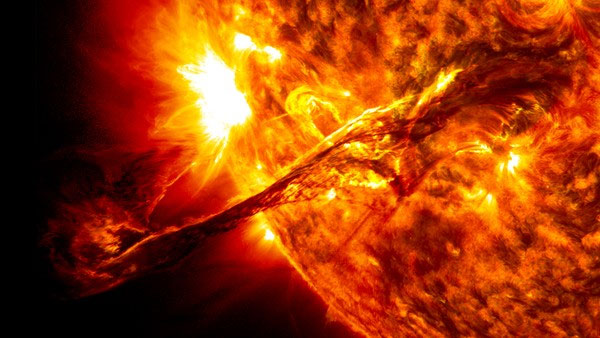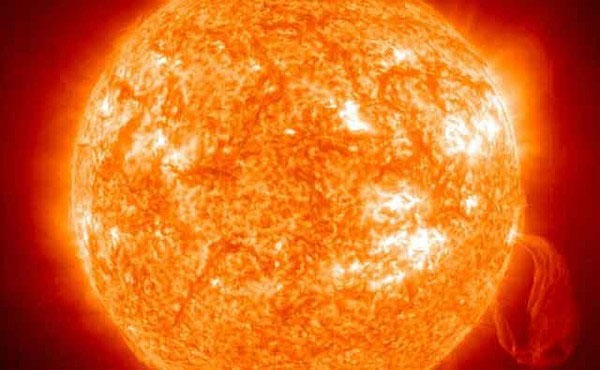Explain the cause of the solar atmosphere hotter than the surface
Scientists have the most compelling evidence to explain why the Sun's atmosphere has a much more terrible temperature than its own surface.
The first atmosphere of the Sun is the photosphere , which has a temperature of about 6,000 degrees K (about 5,700 degrees C), while the surrounding halo is 300 times hotter.
Jeff Brosius - space scientist at Catholic University, Washington State, and a senior expert at NASA, said: "This has been controversial, since it is common to stay away from heat and temperature. must be reduced. '

Through some observations, the answer is related to the new term: Nanoflares - the phenomenon of small and continuous bursts of heat and energy inside the Sun.
In particular, experts need to rely only on data collected within 6 minutes of a least expensive missile project at NASA - EUNIS probe missile project .
The EUNIS rocket was launched in 2013, equipped with a particularly sensitive spectrophotometer. This eyebrow will synthesize information from light waves, giving the component rays at a certain temperature, providing images every 1.3 seconds on the Sun's surface.

Some previous theories suggest that the Sun's magnetic energy translates into heat in the aura that raises the temperature. However, no one has been able to give an accurate indication of the source of energy that caused this phenomenon, due to limitations of science and technology.
Scientists estimate that nanoflares can heat up the solar atmosphere up to 10 million degrees K. Heat components are cooled quite quickly, so the halo temperature is usually only about 1 - 3 million degrees K.

However, extremely high heat rays still exist. The EUNIS missile spectrometer has identified the wavelengths of light that cause a heat of 10 million degrees K, but still faint but still exists. These are rays coming from thermal explosions nanoflares.
According to Brosius, clearly defining this thermal band is a big step, proving that nanoflares exist. According to Adrian Daw, head of the EUNIS project team: 'This is a big step in research because this finding shows that small and inexpensive things like rocket exploration can bring unexpected results. wait".
- The cause of the Sun's atmosphere is hotter than the surface of the Sun.
- NASA successfully deciphered the long-standing mystery about the Sun.
- New discovery of the solar atmosphere
- Sun surface with Earth core, which is hotter?
- Pluto has an upside-down atmosphere
- The giant dark area is detected again on the surface of the Sun.
- The sun is 'stealing' the atmosphere
- Explore the atmospheric atmospheres of the solar system
- The spacecraft delayed flying because of the solar storm
- NASA prepares to launch a satellite observing the sun's surface
- Publish photos of the Sun's atmosphere from the nearest distance
- New Horizons observes lightning on the surface of Jupiter
 Van Allen's belt and evidence that the Apollo 11 mission to the Moon was myth
Van Allen's belt and evidence that the Apollo 11 mission to the Moon was myth The levels of civilization in the universe (Kardashev scale)
The levels of civilization in the universe (Kardashev scale) Today Mars, the sun and the Earth are aligned
Today Mars, the sun and the Earth are aligned The Amazon owner announced a secret plan to build a space base for thousands of people
The Amazon owner announced a secret plan to build a space base for thousands of people